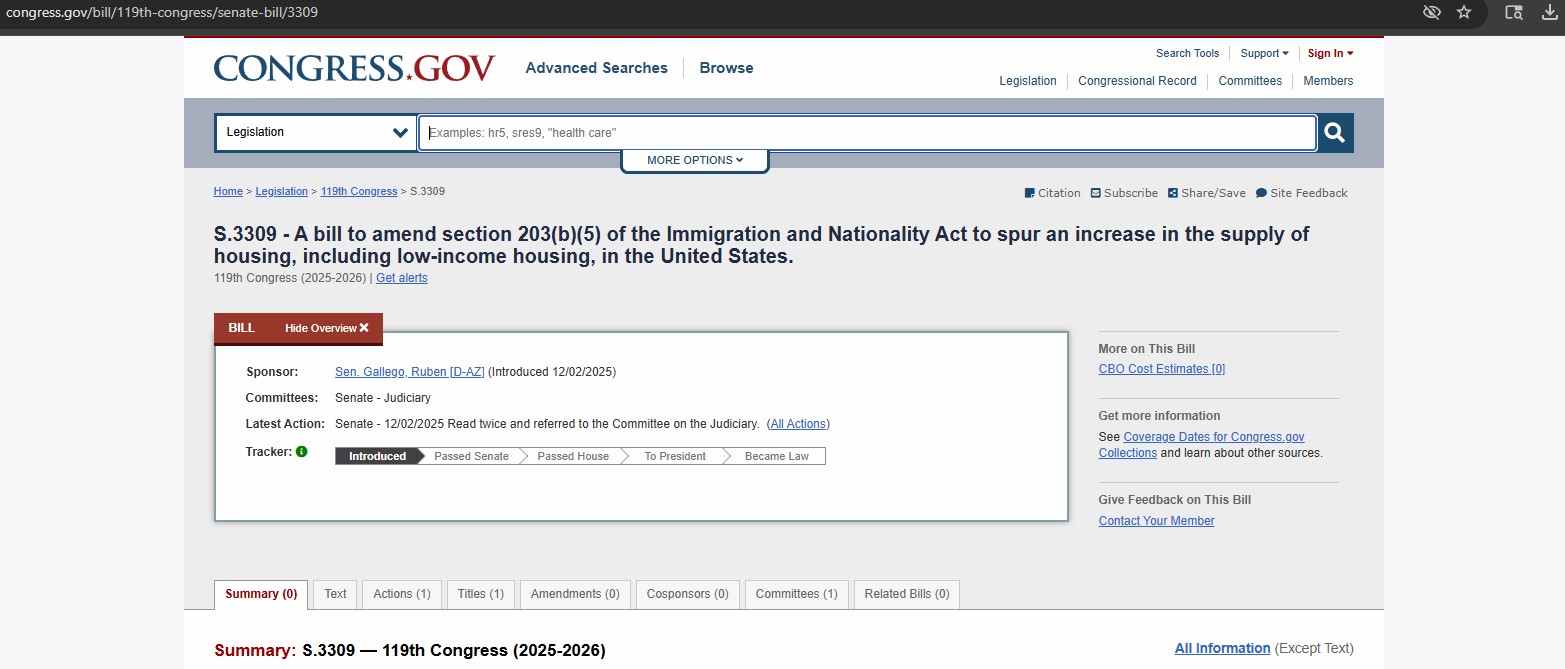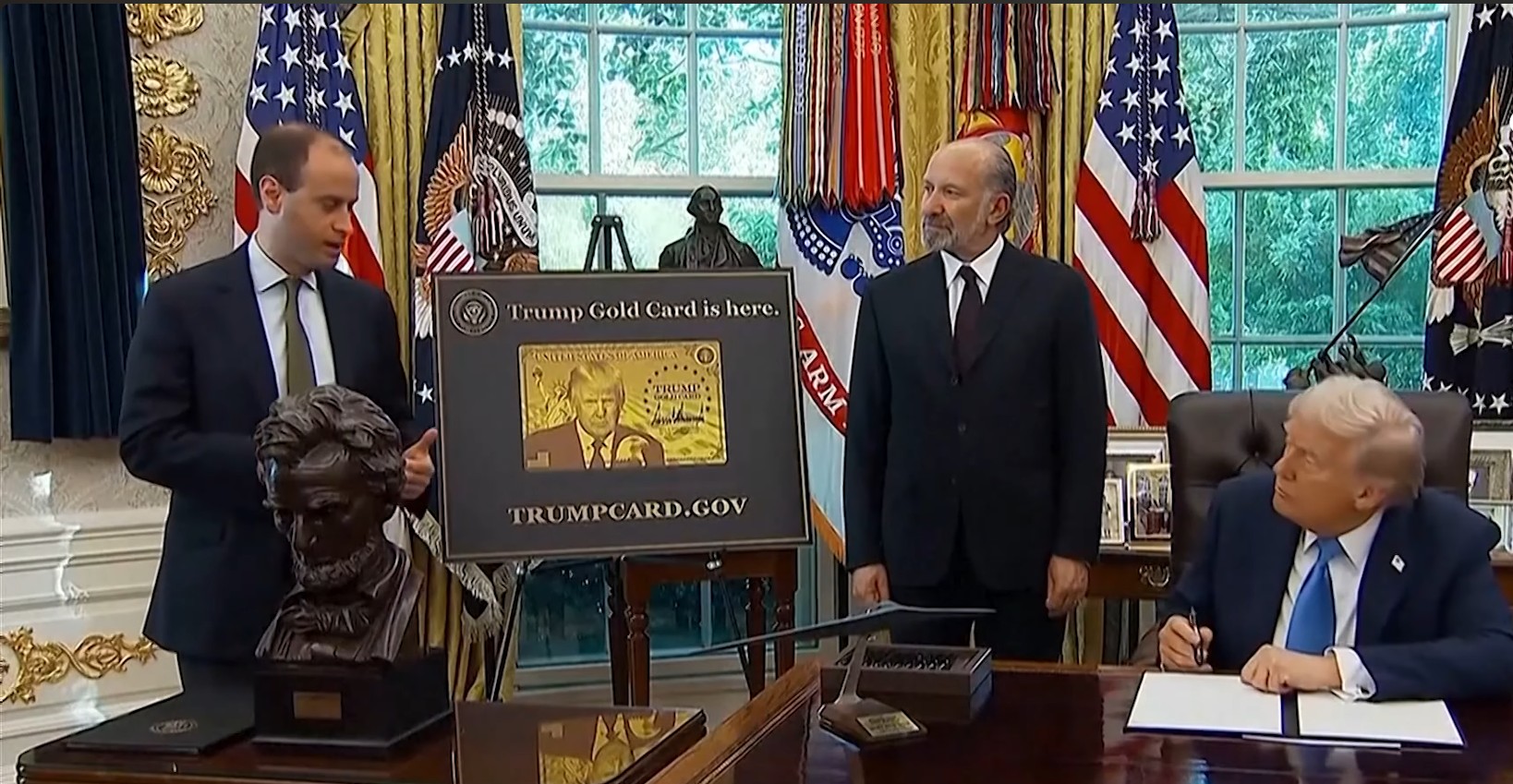August 2025 Update on the Sustainment Period Lawsuit – What EB-5 Investors Need to do
3rd August, 2025
AIIA opposed IIUSA’s lawsuit to extend the EB-5 sustainment period, filing an amicus brief that helped secure a ruling from Judge Reyes affirming the RIA’s two-year at-risk rule for post-RIA investors. USCIS will now draft formal regulations, and AIIA plans to mobilize investors during the public comment period to protect this interpretation from industry pushback.

As the EB-5 community knows, Invest in the U.S.A. (IIUSA) — an association of EB-5 regional centers — has sued the U.S. Department of Homeland Security (DHS) to challenge the DHS/USCIS interpretation of the “sustainment period” (i.e., the amount of time that an investor’s funds must remain at-risk to qualify for Lawful Permanent Resident or “LPR” status) for EB-5 investors who invested after the passage of the EB-5 Reform and Integrity Act (RIA) of 2022.
A longer sustainment period is desired by many regional centers because they often have projects for which the investment period is longer than two years. Others want to redeploy the capital of investors facing visa backlogs (currently Indian and Chinese investors), as well as any investors who face delays in obtaining conditional LPR status. Redeployment, effectively, deprives an investor of the return and control over their assets for far longer than necessary for job creation and far longer than Congress intended when it created the EB-5 program. Regrettably, some regional centers have used redeployed funds in a manner unfavorable to investors and inconsistent with the intent of the EB-5 program.
USCIS has agreed that Congress intended to fix this issue in the RIA. The regional centers’ and IIUSA’s effort to achieve a longer sustainment period at best violates the RIA’s text and intent; at worst, it indicates an absence of compassion for EB-5 investors, many of whom are not ultra wealthy and invest their life’s savings to immigrate to the United States. They need their money returned as soon as the investment project of their choosing achieves the requisite job creation and is in a financial position to repay its investors.
This is the reason our organization was formed – to serve as a voice for and protect investors navigating the EB-5 journey. The American Immigrant Investor Alliance (AIIA) robustly responded to IIUSA’s lawsuit seeking to prolong the sustainment period. We raised funds, hired a former U.S. Department of Justice (DOJ) lawyer with extensive experience in immigration litigation, Jesse Bless, and filed an amicus brief in that case to represent investors’ perspectives. We have previously summarized that amicus brief for interested readers.
USCIS provided consent for AIIA to file an amicus brief and openly agreed with many of our arguments in their pleadings. Below is an excerpt from the Joint Status Report (JSR) filed on March 21st regarding negotiations between the parties for a settlement, where arguments from our amicus brief were cited by the parties.
“…Plaintiff’s offer of resolution as well as their requested relief would necessarily expose Defendants to unacceptable risk of future litigation from such investors who are not parties to this litigation and whose interests do not necessarily align with Plaintiff’s. See, e.g., ECF 20 (Brief for the American Immigrant Investor Alliance as Amicus Curiae in Support of Defendants’ Motion to Dismiss).”
The Judge Rules in Investors’ Favor
In her most recent order in the case, the presiding judge, The Honorable Ana C. Reyes, ruled in favor of the government and AIIA to yield an interim victory for immigrant investors.
Since the very beginning IIUSA had tried to make the case that the RIA did not change the sustainment period. In their Support of Motion for Summary Judgment and Opposition to Defendants’ Cross-Motion to Dismiss, IIUSA pleaded that “…the better view of the statutory language is that Congress intended to codify USCIS’s pre-existing sustainment regulation that has existed for decades, not jettison it…”
Judge Reyes did not endorse IIUSA’s position.
In the opening paragraph of her order, Judge Reyes found that the RIA changed the sustainment period. As she wrote: “[a]mong its core changes, the RIA altered the INA’s language regarding how long investors under the EB-5 Immigrant Investor Program (EB-5 Program) must keep their money at risk to be eligible for an immigrant visa.”
This holding is a major win for EB-5 investors, and validates the premise of our argument that the RIA’s plain text commands a sustainment period that runs for two calendar years from the date that capital is placed at-risk. Judge Reyes’ reading of the law undercuts IIUSA’s counter position that the RIA made no change to the EB-5 sustainment period and even “codified” the pre-RIA status quo.
Because USCIS is currently drafting new rules to implement the EB-5 program, Judge Reyes dismissed IIUSA’s motion for summary judgement as moot.
The only residual victory that IIUSA can possibly claim from this order is that USCIS is undertaking notice-and-comment rulemaking on matters related to sustainment. This is a loss for IIUSA and their regional center members because USCIS will almost certainly affirm the current policy guidance on the USCIS website of a sustainment period of two years from the date that an investor’s “full amount of qualifying investment is made to the new commercial enterprise and placed at risk under applicable requirements, including being made available to the job creating entity.”
During the case, IIUSA had stated that this guidance on the website was causing economic harm to their EB-5 regional center members and demanded that USCIS apply the pre-RIA sustainment period during the rulemaking process. Judge Reyes did not agree.
The judge did not agree or order a change to the current policy guidance. We hope that codification of the guidance will provide further assurance of the sustainment period even if IIUSA continues to litigate this matter after USCIS publishes the final rule.
In sum, after spending an extraordinary amount of time and money, IIUSA has achieved no material change to the USCIS interpretation of the sustainment period for post-RIA investors. Judge Reyes denied their motion for summary judgment and implicitly endorsed the position of USCIS and AIIA. Bizarrely, IIUSA has celebrated this ruling as a victory for themselves.
What Happens Next
The current rule on sustainment remains in effect. All EB-5 investments by post-RIA investors will be considered properly sustained if an investor’s capital remains at-risk for two calendar years from the date the investment period commences. Pre-RIA investors will remain subject to the pre-RIA rule, i.e., their sustainment period begins only after conditional LPR status is obtained, which is conditional upon being “Current” on the Immigrant Visa Bulletin or having a priority date prior to the cutoff date in the Bulletin.
USCIS will first publish a notice of proposed rulemaking and provide a window for the public to make comments. After the comment period ends, USCIS will publish a final rule. This process could possibly take one to two years or even longer.
We must also acknowledge, however, that we cannot predict the exact text of USCIS’s new rule on sustainment. We will have the opportunity to provide comments on behalf of the investor community, and we intend to take full advantage of the comment period to convey to the agency the importance of the current sustainment interpretation and other key rules for investors.
USCIS’s proposed rule, when it is published, is likely to match the current guidelines for two reasons:
- DHS, which is USCIS’s parent department, has taken the position in open court that the RIA commands a sustainment period of two calendar years from the date that an investor’s funds are placed at-risk. It is unlikely that the government will reverse its position, since it has relied on this argument in the litigation.
- The Court’s order did not overturn the current rule on sustainment, even as IIUSA offered a different statutory interpretation and argued that regional centers would face great harm.
USCIS is beginning the notice-and-comment rulemaking process to issue a new regulation, implementing the RIA and rules on sustainment. The process is outlined by the Administrative Procedure Act (APA), which governs how the government interprets laws and issues binding regulations based on those interpretations.
The draft rule will, by statute, be published in the Federal Register as a “Notice of Proposed Rulemaking” (NPRM). The general public, including EB-5 investors regardless of their nationality, will be able to offer comments in response to the NPRM. These comments will likely be uploadable via a website featured in the notice.
Once the comment period closes, USCIS will need to review each comment and incorporate as appropriate substantive changes into the final rule, which may thus vary from the proposed rule it initially published. Where USCIS disagrees with suggestions made in comments to the proposed rule, it must explain that disagreement in the final rule. Else, the rule may be held “arbitrary and capricious” in violation of the APA, and may thus be invalidated through the process of judicial review.
Once the final rule is complete, USCIS will issue a Notice of Final Rulemaking in the Federal Register, which will specify the date that the rule comes into effect.
AIIA will pursue all legal and political options to offer substantive comments in response to the proposed rule. When the draft rule is published, we encourage every single EB-5 investor and concerned stakeholder to submit comments on the rule, and we will provide you the tools to do so.
IIUSA and regional centers will also offer comments on the rule. Consistent with their adverse posture on this issue, it is entirely possible that IIUSA will try to inundate USCIS with comments that demand a longer sustainment period. In order for regional centers to keep exploiting investors with redeployment of their capital. The fatigue of those responses may prompt USCIS to relent to IIUSA’s demands. AIIA is ever ready to counter IIUSA’s arguments as deficient and argue that USCIS should ignore them, as we have previously done.
What You Need to do
AIIA will continue to fight for the rights of immigrant investors. Investors are the lifeblood of the EB-5 program, and in many respects, they are the most vulnerable party involved. Accordingly, they merit special protection.
The refrain “Fight, Fight, Fight,” has bipartisan popularity among political factions in the United States. It is because politics in this country is always a struggle. It is neither gentle nor for the faint of heart. Therefore, we must fight or investors’ voices will not be heard. Only the most well-organized, well-funded, and well-led coalitions are effective and successful.
If you support our efforts to preserve a fair sustainment period, as envisioned by Congress and textually commanded through the RIA, please sign up for our newsletter by reaching out through our contact form and please tell other investors and concerned parties to prepare for this effort.
We intend to release instructions on how investors and their allies can participate in the notice-and-comment process, along with suggestions on what to write. The comment period will be a very narrow period of time, and we must ensure that pro-investor views are not drowned out by other parties. Industry stakeholders such as attorneys, investment advisors, immigration agents, and other parties are also encouraged to participate. Again, U.S. citizenship or Lawful Permanent Residency is not required to submit a comment. Hence, all EB-5 stakeholders have every reason to participate.
AIIA’s Action
AIIA will continue to defend the current sustainment rules, and we will make every effort to influence the content of EB-5 regulations.
In all likelihood, IIUSA will continue their lawsuit against USCIS after the final rule is published and, once again, AIIA will have to raise money to pay for legal fees to ensure the investor’s voice is not lost in this process. We encourage all persons who support EB-5 investors and their interests to donate to our legal defense fund, as well as our lobbying fund.
With our limited resources, AIIA is also focusing on the legislative branch in our effort to protect the sustainment period. Only Congress can offer permanent relief to investors who would be harmed if USCIS’s rulemaking is struck down by a court in the future.
AIIA has reactivated its policy and lobbying team, which is in contact with congressional offices and is currently working with immigration experts to draft language that would protect post-RIA investors from redeployment. It is our hope that such language may be inserted into the next EB-5 reauthorization law that must be enacted in 2027.
The effort to lobby Congress and generally provide relief to immigrant investors requires money. AIIA is solely reliant upon the donations of its members for funds. Please donate to AIIA or join our membership program today so we can continue to fight for the rights of investor immigrants.

Stay Up To Date With AIIA
Join our newsletter to stay up to date on EB-5 updates.
By subscribing you agree to with our Privacy Policy and provide consent to receive updates from our company.
Recommended Resources

How to find a good EB-5 Litigation Attorney
Choose an attorney with EB-5 and litigation experience who is organized, detail-oriented, and avoids making guarantees. You may need a...
Read More
The Redeployment Conundrum
Redeployment litigation arises when NCE managers reinvest EB-5 funds without proper judgment, exposing investors to unnecessary risk despite broad contractual...
Read More
“Privity” in EB-5 Litigation
EB-5 issuers often design complex structures and narrow “privity” relationships to make litigation difficult, forcing investors into uphill battles and...
Read MoreRecent Blog Posts

We Congratulate Senator Gallego for New Legislation that Leverages the EB-5 Program to Build Affordable Housing
Sen. Gallego's EB-5 bill mobilizes foreign capital to build affordable housing. This collaboration has boosted AIIA's Congressional ties & credibility...
Learn More
We Won The EB-5 Fee Increase Lawsuit
AIIA successfully won its lawsuit against USCIS’s April 2024 EB-5 fee increases, with a federal judge ruling that the agency...
Learn More
One Year Left to Invest in a EB-5 Regional Center Project
AIIA warns that EB-5 Regional Center investors will lose protection after Sept. 30, 2026 unless they file I-526E petitions before...
Learn More
Trump Gold Card: A New Green Card Pathway Competing with EB-5
Trump’s new $1M “Gold Card” visa plan competes directly with EB-5 and raises serious legal concerns, as it lacks statutory...
Learn MoreGet In Touch With Us
If you have any questions, inquiries, or collaboration proposals, please don’t hesitate to reach out to us.




Responses (0)